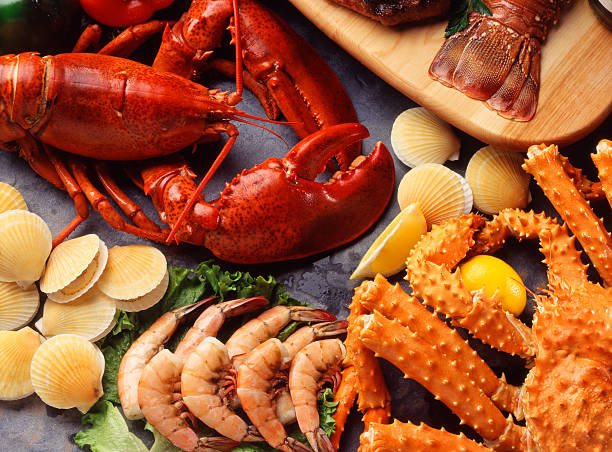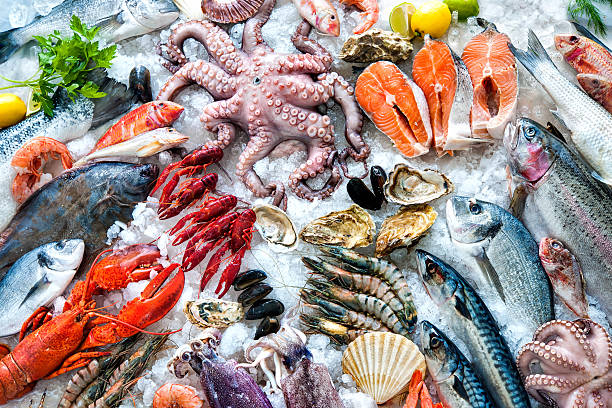Seafood
Umami chemicals are prevalent in a variety of seafood varieties. Inosinate, disodium inosinate, and glutamate can both be found in seafood in naturally occurring amounts. Another umami substance that is frequently added to foods as addition is inosinate. The glutamate and inosinate concentration per 3.5 ounces (100 grams) for various types of seafood is as follows:
- Dried baby sardines: 40–50 mg (Glutamate)
- Bonito flakes: 30–40 mg (Glutamate)
- Bonito fish: 1–10 mg (Glutamate)
- Tuna: 1–10 mg (Glutamate)
- Yellowtail: 5–9 mg (Glutamate)
- Sardines: 10–20 mg (Glutamate)
- Mackerel: 10–30 mg (Glutamate)
- Cod: 5–10 mg (Glutamate)
- Shrimp: 120 mg (Glutamate)
- Scallops: 140 mg (Glutamate)
- Anchovies: 630 mg (Glutamate)
Disodium inosinate and glutamate work together synergistically to enhance the umami flavor of foods that contain both. Chefs match meals high in glutamate with foods high in disodium inosinate to improve the overall flavor of a dish.











